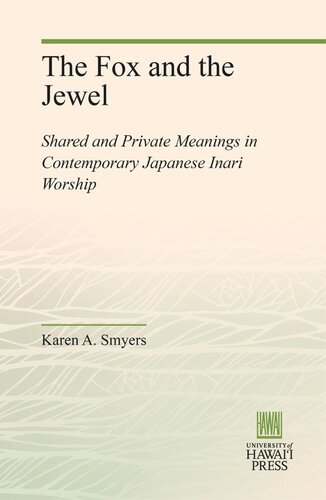

Most ebook files are in PDF format, so you can easily read them using various software such as Foxit Reader or directly on the Google Chrome browser.
Some ebook files are released by publishers in other formats such as .awz, .mobi, .epub, .fb2, etc. You may need to install specific software to read these formats on mobile/PC, such as Calibre.
Please read the tutorial at this link: https://ebookbell.com/faq
We offer FREE conversion to the popular formats you request; however, this may take some time. Therefore, right after payment, please email us, and we will try to provide the service as quickly as possible.
For some exceptional file formats or broken links (if any), please refrain from opening any disputes. Instead, email us first, and we will try to assist within a maximum of 6 hours.
EbookBell Team

4.4
52 reviewsThe deity Inari has been worshipped in Japan since at least the early eighth century and today is a revered presence in such varied venues as Shinto shrines, Buddhist temples, factories, theaters, private households, restaurants, beauty shops, and rice fields. Although at first glance and to its many devotees Inari worship may seem to be a unified phenomenon, it is in fact exceedingly multiple, noncodified, and noncentralized. No single regulating institution, dogma, scripture, or myth centers the practice. In this exceptionally insightful study, the author explores the worship of Inari in the context of homogeneity and diversity in Japan. The shape-shifting fox and the wish-fulfilling jewel, the main symbols of Inari, serve as interpretive metaphors to describe the simultaneously shared yet infinitely diverse meanings that cluster around the deity. That such diversity exists without the apparent knowledge of Inari worshippers is explained by the use of several communicative strategies that minimize the exchange of substantive information. Shared generalized meanings (tatemae) are articulated while private meanings and complexities (honne) are left unspoken. The appearance of unity is reinforced by a set of symbols representing fertility, change, and growth in ways that can be interpreted and understood by many individuals of various ages and occupations.
The Fox and the Jewel describes the rich complexity of Inari worship in contemporary Japan. It explores questions of institutional and popular power in religion, demonstrates the ways people make religious figures personally meaningful, and documents the kinds of communicative styles that preserve the appearance of homogeneity in the face of astonishing factionalism.